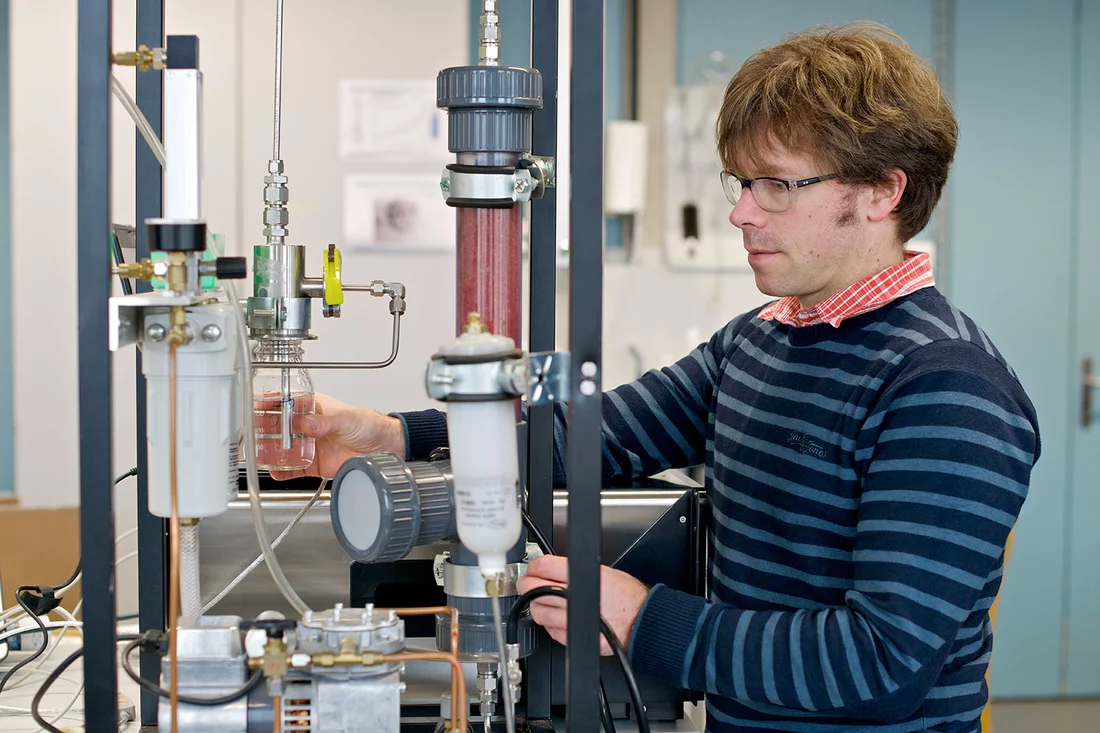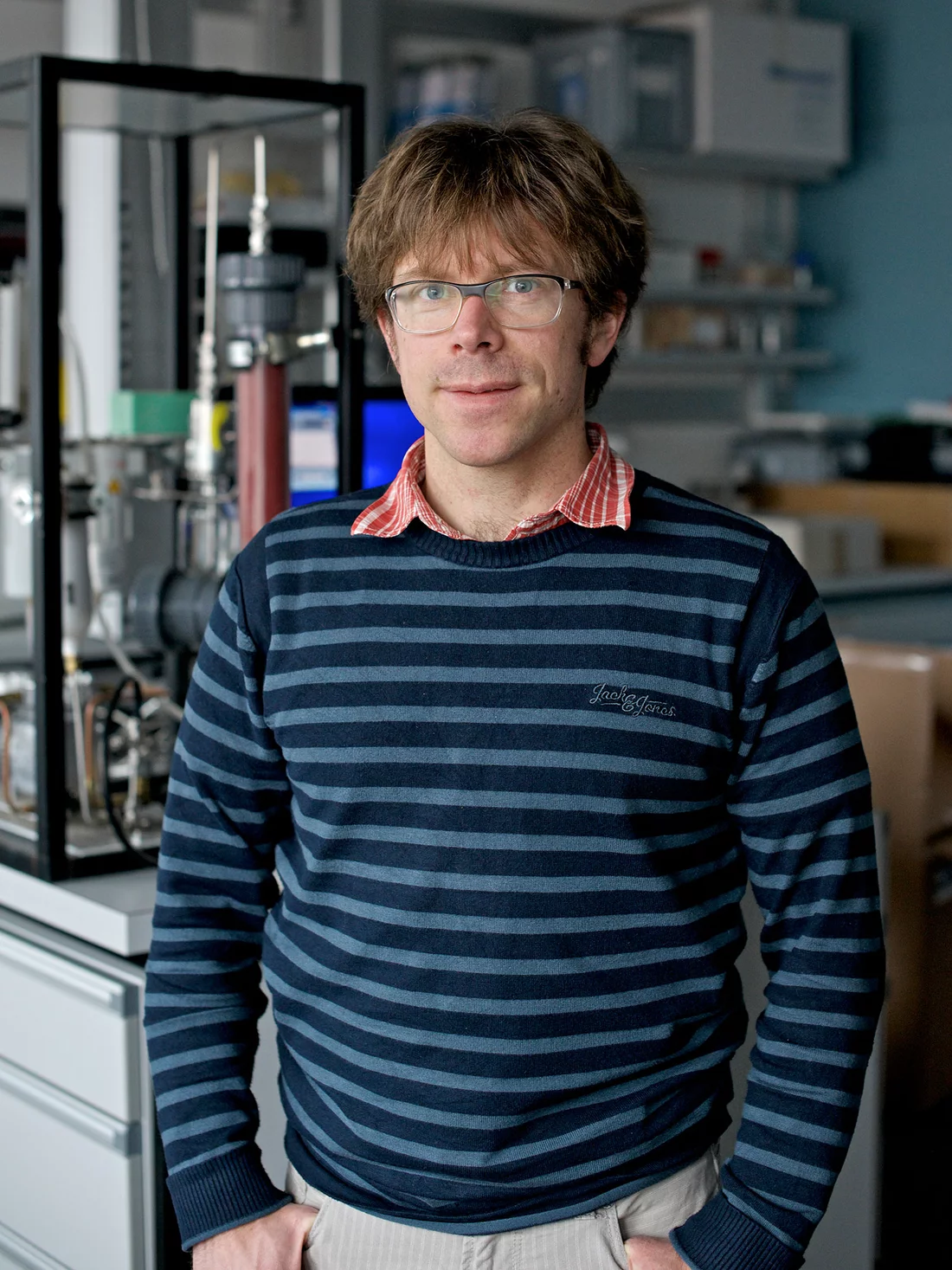PSI-researcher Martin Gysel receives prestigious European funding (ERC Consolidator Grant) for his studies on the role of soot in cloud formation and global warming.
Soot particles, for instance produced when wood or diesel fuel is burned, influence the climate. A team of researchers from the Paul Scherrer Institute (PSI) headed by environmental physicist Martin Gysel is to study the extent of their role in this in a new project funded by an ERC Consolidator Grant of EUR 2 million from the European Research Council. For instance, the project will investigate how soot influences the formation of different clouds. If the properties of the clouds are altered by manmade particles, this has an impact on the climate. For their studies, the researchers will be examining the properties of real clouds that often veil the mountains directly on the Jungfraujoch. The results should help improve computer models used to predict developments in the atmosphere. Correct forecasts are important if we want to assess which measures are necessary and particularly effective in combatting climate change.
Soot and climate: EUR 2 million for research at the PSI
When you burn wood, coal or diesel fuel, soot forms and frequently enters the atmosphere unfiltered, where it poses a hazard to human health and influences the climate. However, we still understand very little about the impact of soot to this day. This is where a new research project at the Paul Scherrer Institute (PSI) comes in, examining how soot influences the properties of different types of clouds and warms the atmosphere by absorbing solar radiation. The project will be headed by environmental physicist Martin Gysel, who has been awarded a grant from the European Research Council to the tune of EUR 2 million (ERC Consolidator Grant). The results of the experiments should help to consider the influence of soot particles in computer simulations used to describe processes in the atmosphere. Models that are as accurate as possible are important to be able to gauge the involvement of different substances in global warming correctly and thus take targeted measures. However, the results could also yield insights directly: “A soot particle only remains in the atmosphere for around two weeks, which begs the question as to how far we can alleviate global warming temporarily by reducing soot emissions,” explains Gysel.
The impact of soot on cloudst
Clouds play a key role in the temperatures on Earth because they reflect a proportion of the sunlight, thus preventing it from warming the ground. Water droplets that make up liquid water clouds can only form if particles are present in the atmosphere that act as cloud condensation nuclei, i.e. where water vapour can accumulate. The interactions between soot particles and clouds are important for two reasons: firstly, these particles, which stem from manmade emissions, can increase the number of cloud droplets, thereby causing the clouds to reflect more sunlight and thus cool the atmosphere; secondly, if cloud droplets fall to Earth in the form of rain, the lifespan of the particles that acted as cloud condensation nuclei becomes shorter. In their project, the researchers from the PSI also want to clarify the extent to which changes that the soot particles are subject to during their time in the atmosphere alter their properties as cloud condensation nuclei for cloud droplets.
Does soot make ice clouds?
At lower temperatures, it becomes somewhat more complicated. Cloud droplets can freeze, but normally only do so at around minus 38 degree Celsius, way below the usual freezing point of water. Certain (water-) insoluble particles can already act as ice nuclei at higher temperatures – and thus cause the droplets around them to freeze, thereby triggering the transformation of a liquid water cloud into an ice cloud. An ice cloud reflects much less sunlight and is more likely to turn into precipitation. Consequently, manmade ice nuclei can have a warming effect on the climate. Natural ice nuclei are fine grains of sand that the wind has stirred up and deposited, e.g. Saharan dust, or even bacteria. Soot particles that primarily stem from human activities may well also play a role in clouds as ice nuclei. “Earlier lab and field measurements have yielded various partly contradictory results in this respect. While soot particles do not make great ice nuclei, there are far more of them in the atmosphere. We want to clear up this question once and for all with in situ cloud measurements so that we can factor the influence of soot on the formation of ice clouds into computer simulations used to describe the origin of clouds correctly in future,” says Gysel.
Lab in the clouds
The interactions between the soot particles and the clouds are being studied in a lab on the Jungfraujoch, where the PSI has already been conducting atmospheric research for many years. In doing so, the researchers want to make the most of the fact that the Jungfraujoch is veiled in cloud for up to forty per cent of the time, which means that samples can be taken directly and studied. With this in mind, the researchers are constructing a sophisticated “inlet” system that separates the cloud sample into its constituent parts – ice crystals, water droplets and interstitial particles, i.e. ones that have neither formed droplets nor ice crystals. This enables the researchers to determine the nucleus type around which the ice crystals form and, more to the point, learn whether any soot particles are present.
How does soot heat up the atmosphere?
Soot does not only influence the climate indirectly via changes to clouds, but also directly. As soot is black, it warms the atmosphere: it absorbs solar radiation, warms up as a result and releases the heat into the air. How strong this effect is depends, among other things, on the physical and chemical properties of the soot, which is why the researchers want to simulate the atmospheric ageing processes of soot in lab experiments at the PSI and determine how far soot particles of different sizes, shapes and compositions absorb sunlight. These results will then be compared with environmental measurements on real soot particles of different ages.
European backing
Using the ERC Consolidator Grants, one of which Martin Gysel has received for the project, the European Research Council funds outstanding research projects by scientists who have already gained experience as independent researchers after completing their doctorates. Gysel himself studied physics at ETH Zurich, where he obtained a doctorate at the Department of Environmental Sciences in 2003. Following a research stint in England, he has been working at the Paul Scherrer Institute since 2005, where he is due to take over the aerosol physics research group at the beginning of 2014. The funding is primarily used to recruit young scientists – postdocs and doctoral students – and finance the lab and field measurements.
Text: Paul Piwnicki
About PSI
The Paul Scherrer Institute develops, builds and operates large, complex research facilities, and makes them available to the national and international research community. The Institute's own key research priorities are in the investigation of matter and material, energy and the environment; and human health. PSI is Switzerland's largest research institution, with 1500 members of staff and an annual budget of approximately 300 million CHF.
Contact
Dr. Martin GyselAerosol physics research group
Paul Scherrer Institute, 5232 Villigen PSI, Switzerland
Tel: +41 56 310 41 68; E-mail: martin.gysel@psi.ch
Additional Information:
Martin Gysel's web page: http://www.psi.ch/lac/martin-gyselLaboratory of Atmospheric Chemistry: http://www.psi.ch/lac


